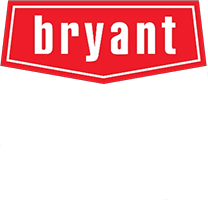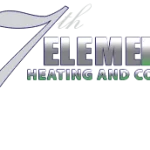Creating a Healthier and Safer Indoor Environment for Your Family
As a homeowner in Boise, you invest in creating a comfortable and safe space for your family. You carefully consider everything from the paint on the walls to the food in your pantry. But what about the air you breathe every day? Indoor air can be surprisingly more polluted than outdoor air, filled with dust, pollen, pet dander, and even microscopic particles that can impact your family’s health and well-being. This is where an indoor air purification system becomes more than a luxury—it’s a cornerstone of a truly healthy home.
Understanding the different types of air purification solutions and how they integrate with your existing HVAC system can feel complex. This guide will break down the essentials, helping you make an informed decision to improve your home’s air quality and create the sanctuary your family deserves.
Why Indoor Air Quality Matters More Than You Think
The Environmental Protection Agency (EPA) reports that concentrations of some pollutants are often 2 to 5 times higher indoors than outdoors. These airborne contaminants include:
- Allergens: Pollen, dust mites, pet dander, and mold spores.
- Volatile Organic Compounds (VOCs): Gases emitted from paints, cleaning supplies, furniture, and building materials.
- Pathogens: Airborne bacteria and viruses that can spread illness.
- Particulate Matter: Smoke, dust, and other fine particles that can be inhaled deep into the lungs.
Poor indoor air quality can contribute to a range of health issues, from allergies and asthma to headaches and fatigue. For households with children, elderly members, or individuals with respiratory conditions, clean air is paramount. A dedicated air purification system works around the clock to capture and eliminate these pollutants, making your home’s air healthier for everyone.
Types of Whole-Home Air Purification Systems
When it comes to purifying the air in your entire home, several technologies can be integrated directly into your HVAC system. This approach is far more effective than portable, single-room units.
High-Efficiency Media Filters
These are advanced filters, often with a high MERV (Minimum Efficiency Reporting Value) rating, that slide into your HVAC system. They are much more effective than standard 1-inch filters at trapping smaller particles like bacteria, smoke, and pet dander. They capture physical particles by forcing air through a fine mesh.
UV-C Germicidal Lamps
Ultraviolet (UV) air purifiers use UV-C light to attack germs and pathogens. As air circulates through your HVAC system, it passes by the UV lamp, which neutralizes airborne viruses, bacteria, and mold spores by scrambling their DNA. This technology doesn’t trap particles but instead sterilizes the air, preventing microorganisms from reproducing and growing on your indoor coil.
Air Scrubber & Oxidizer Technology
This is an active purification method. These systems produce and distribute “air scrubbers,” such as hydro-peroxides, throughout your home via the ductwork. These molecules actively seek out and neutralize contaminants in the air and on surfaces, effectively cleaning your entire living space, not just the air that passes through the furnace or air handler.
Pairing these systems with other indoor air quality solutions, like a whole-house humidifier, can further enhance your home’s comfort, especially during Boise’s dry seasons. Proper humidity levels can help reduce the transmission of certain airborne viruses and alleviate dry skin and sinuses.
Comparing Air Purification Technologies
| Feature | Media Filters (HEPA/MERV) | UV-C Germicidal Lamps | Air Scrubbers/Oxidizers |
|---|---|---|---|
| Primary Target | Particulates (dust, pollen, dander) | Microorganisms (viruses, bacteria, mold) | VOCs, odors, pathogens (air & surfaces) |
| Method | Passive trapping | Sterilization via UV light | Active neutralization |
| Maintenance | Filter replacement (6-12 months) | Bulb replacement (1-2 years) | Cell replacement (2-3 years) |
| Best For | Homes with allergies and asthma | Preventing microbial growth in HVAC | Comprehensive air & surface cleaning |
Often, the most effective solution is a combination of these technologies. For example, a high-MERV filter can capture particulates while a UV lamp sterilizes the air. A professional consultation can help determine the best setup for your home’s specific needs and ensure it works seamlessly with your system. Regular check-ups through an HVAC maintenance plan are crucial for keeping these systems running at peak performance.
Did You Know?
Indoor air can be up to 100 times more polluted than outdoor air, according to some studies. Much of this comes from everyday sources like cooking fumes, cleaning products, and even pets. Improving ventilation and adding a dedicated air purification system can dramatically reduce your family’s daily exposure to these pollutants.
The Local Angle: Air Quality in Boise and the Treasure Valley
Living in beautiful Boise, we enjoy clean air for much of the year. However, our region faces unique challenges that impact indoor air quality. During the summer, wildfire smoke from surrounding areas can drift into the Treasure Valley, bringing with it fine particulate matter (PM2.5) that easily infiltrates our homes. These particles are small enough to bypass the body’s natural defenses and can be particularly harmful to respiratory health.
Additionally, the Treasure Valley is known for high pollen counts during certain seasons, which can be a nightmare for allergy sufferers. An effective indoor air purification system is your first line of defense, capturing these irritants before they can circulate through your home. By installing a whole-home system in your Boise, Meridian, or Nampa home, you create a clean-air refuge for your family, no matter what’s happening outside.
Ready to Improve Your Home’s Air Quality?
Take the first step toward a healthier indoor environment. The expert team at 7th Element Heating and Cooling can assess your home’s needs and recommend the perfect air purification solution. We believe in honest communication and creating long-term value for our customers.
Frequently Asked Questions (FAQ)
How do I know if I need an air purification system?
If anyone in your household suffers from allergies, asthma, or frequent respiratory issues, an air purifier can provide significant relief. Other signs include persistent odors, excessive dust, or concerns about pollutants like wildfire smoke. A professional assessment can help determine your specific needs.
Will an air purifier increase my energy bills?
Modern whole-home air purifiers are designed for energy efficiency. While they do consume some electricity, the impact on your utility bill is typically minimal. Conversely, a clean HVAC system with proper filtration can actually run more efficiently, potentially offsetting the cost. Your technician can provide details on specific models.
Can I install a whole-home air purifier myself?
Whole-home systems are installed directly into your HVAC ductwork, which requires professional expertise to ensure proper placement, electrical wiring, and integration with your existing equipment. A professional HVAC installation ensures safety, effectiveness, and protects your system’s warranty.
How often do I need to maintain my air purification system?
Maintenance depends on the type of system. Media filters generally need replacement every 6-12 months, while UV bulbs can last 1-2 years. Including your air purifier in a regular HVAC maintenance plan is the best way to ensure all components are cleaned, inspected, and replaced on schedule.
Glossary of Terms
HEPA (High-Efficiency Particulate Air): A standard for air filters that are guaranteed to trap 99.97% of airborne particles that are 0.3 microns in size.
MERV (Minimum Efficiency Reporting Value): A rating scale from 1 to 20 that measures a filter’s ability to capture airborne particles. The higher the MERV rating, the more particles it can trap.
Particulate Matter (PM): A mixture of solid particles and liquid droplets found in the air. PM2.5 refers to fine particles with a diameter of 2.5 micrometers or less, commonly found in smoke and haze.
UV-C Light: A short-wavelength ultraviolet light that disrupts the DNA of microorganisms like bacteria, viruses, and mold, rendering them harmless.
VOCs (Volatile Organic Compounds): Chemicals emitted as gases from certain solids or liquids. They include a variety of chemicals, some of which may have short- and long-term adverse health effects.
Whole-Home Air Purifier: An air cleaning system that integrates directly with a home’s HVAC system to treat the air in the entire house as it circulates.

